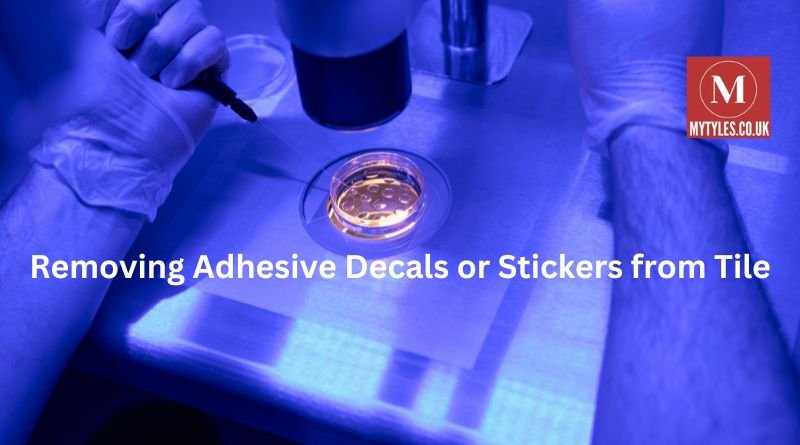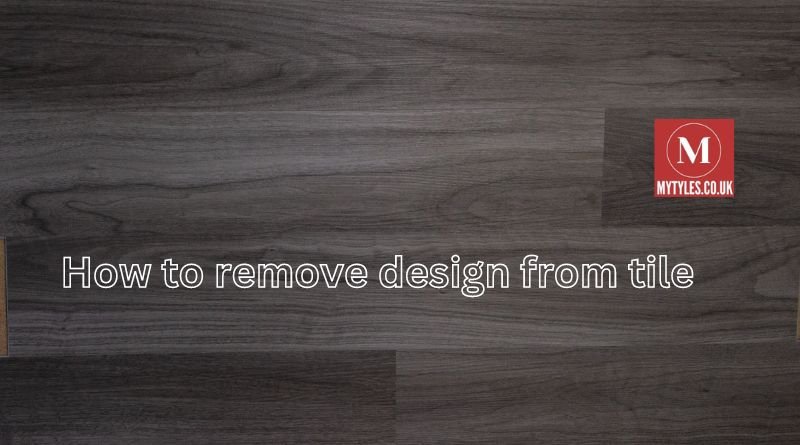Tiles are a common element in homes, offices, and other buildings due to their durability, aesthetic appeal, and ease of cleaning. However, there are instances where the design on a tile becomes outdated, unwanted, or clashes with a new interior vision. Whether it’s a colorful pattern that no longer fits your décor, a logo, or an old image, knowing how to remove design from tile can save you from a full-scale renovation. This article delves into several methods, depending on the material of the tile and the nature of the design, that can effectively restore the tile to its original state or prepare it for a new design.
Understanding the Types of Tile Designs
Before diving into the removal process, it’s essential to understand the nature of the design on the tile. Tile designs can be applied in various ways, such as:
- Printed Patterns: These designs are printed on the surface of the tile and sealed with a protective glaze. This is common with ceramic and porcelain tiles.
- Engraved or Etched Designs: These are physically carved or etched into the tile, creating a more permanent and textured design.
- Adhesive Decals or Stickers: Some designs are applied via adhesive vinyl decals or stickers, often used for temporary or customizable looks.
- Hand-Painted Designs: These are usually custom-made and hand-painted directly onto the tile, often found in artisanal or decorative tiles.
The method you use to remove a design from tile will vary depending on how the design was applied. Let’s explore the best methods for each type.
Methods for Removing Printed Patterns from Tile
Printed designs are among the most common on tiles, especially with modern ceramic and porcelain materials. These designs are usually baked onto the tile and covered with a glaze, making them somewhat resistant to damage but not entirely impossible to remove.
Sanding and Buffing
One of the most effective methods for removing printed patterns from tiles is sanding. Here’s how to remove a printed design using this method:
- Materials Needed: You’ll need fine-grit sandpaper, a buffer tool, and protective gear such as gloves and a mask.
- Procedure:
- Start by cleaning the tile surface to remove any dirt or debris.
- Gently sand the area with fine-grit sandpaper in a circular motion, applying light pressure to avoid damaging the tile.
- After sanding, buff the area with a polishing tool to restore the smooth finish.
- Caution: Be careful not to over-sand as this could damage the tile’s glaze and cause permanent scratches. Always start with a less abrasive sandpaper and gradually increase the grit if necessary.
Acid Washing
For tough, printed designs, acid washing can be effective. The acid helps to break down the glaze and the ink used in the design.
- Materials Needed: Muriatic acid, a scrubbing pad, gloves, protective eyewear, and a mask.
- Procedure:
- Mix the acid with water in a well-ventilated area following the manufacturer’s instructions.
- Using a scrubbing pad, apply the diluted acid to the tile and scrub the design gently.
- Rinse the tile thoroughly with water after scrubbing.
- Caution: Muriatic acid is highly corrosive. Always wear protective gear and ensure the area is well-ventilated. This method is suitable for ceramic and porcelain tiles but may not work well on more sensitive materials like marble.
Techniques for Removing Engraved or Etched Designs
Engraved designs, whether mechanically or chemically etched, require different techniques for removal. Because these designs are etched into the tile’s surface, removal may involve more aggressive measures.
Grinding
To remove etched designs, you’ll likely need a more intense tool like a grinder.
- Materials Needed: An electric grinder, a dust mask, and protective goggles.
- Procedure:
- Clean the tile’s surface thoroughly.
- Attach a diamond-coated grinding wheel to the grinder and begin grinding away the etched design.
- Work slowly to avoid damaging the tile, focusing only on the areas with the etched design.
- Caution: Grinding generates a lot of dust and debris. Make sure you work in a well-ventilated area and wear appropriate protective equipment. Grinding can also permanently damage the tile surface, so this should be a last resort if no other methods work.
Filling the Engraving
An alternative to completely removing etched designs is to fill them in and cover them up.
- Materials Needed: Epoxy filler, a putty knife, and sandpaper.
- Procedure:
- Apply the epoxy filler to the engraved areas using a putty knife.
- Allow the filler to dry according to the manufacturer’s instructions.
- Once dry, sand the surface until it is smooth and flush with the rest of the tile.
- Caution: This method will not remove the design, but it can effectively cover it up, creating a uniform surface ready for a new design or color application.
Removing Adhesive Decals or Stickers from Tile
Decals and stickers are perhaps the easiest to remove as they are simply adhered to the tile surface.
Heat and Peel Method
- Materials Needed: A hairdryer or heat gun, a plastic scraper, and adhesive remover (optional).
- Procedure:
- Apply heat to the decal using a hairdryer or heat gun to soften the adhesive.
- Once the decal is warm, use a plastic scraper to gently lift the edges and peel it off.
- If any adhesive residue remains, use an adhesive remover or a solution of warm water and dish soap to clean the area.
- Caution: Be cautious when using a heat gun as it can damage the tile if held too close for too long. Always test in an inconspicuous area first.
Removing Hand-Painted Designs from Tile
Hand-painted designs can be tricky to remove, especially if the paint has been sealed with a protective glaze. However, there are methods to eliminate these designs without damaging the tile underneath.

Solvent Method
Certain solvents can help break down paint and make it easier to remove.
- Materials Needed: Paint thinner, a scrubbing pad, gloves, and protective eyewear.
- Procedure:
- Apply the paint thinner to the painted design using a soft cloth or sponge.
- Allow the solvent to sit for a few minutes, then scrub gently with a pad to remove the paint.
- Rinse the tile with water and clean off any remaining solvent.
- Caution: Always test the solvent in a small area before applying it to the entire design. Some solvents may be too harsh for certain types of tile, especially delicate ones like marble or limestone.
Sanding Method
For stubborn hand-painted designs, sanding may also work.
- Materials Needed: Fine-grit sandpaper, a buffer tool, and a soft cloth.
- Procedure:
- Lightly sand the painted area using fine-grit sandpaper, applying gentle pressure to avoid damaging the tile.
- After sanding, buff the area to restore the tile’s smooth finish.
- Caution: As with any sanding method, you should be careful not to damage the protective glaze on the tile, which can result in permanent scratching or dulling.
Post-Removal Care and Maintenance
Once you have successfully removed the design from your tile, you may want to take steps to protect or enhance the tile’s surface. You can apply a fresh glaze or sealer to the tile to give it a smooth, polished finish and protect it from future wear and tear.
Applying a New Design
If you’re interested in updating the look of your tile with a new design, you can explore options such as:
- Tile Decals: Easy to apply and remove, allowing you to change the look as often as you like.
- Stencil Painting: You can paint new designs using stencils for precision and accuracy.
- Tile Stickers: A simple, removable option for adding a design without committing to a permanent change.
Conclusion
Removing designs from tiles may seem daunting, but with the right tools and techniques, it is entirely achievable. Whether you’re dealing with printed patterns, engraved designs, decals, or hand-painted artwork, there’s a method that can restore your tile to a blank slate. By understanding the type of design and tile you’re working with and applying the correct technique, you can save both time and money by avoiding a full tile replacement. Always proceed cautiously to avoid damaging the tile, and when in doubt, consult with a professional to ensure the best results.
Read also: check




